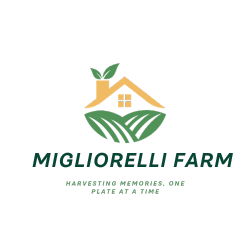In recent years, there has been a growing awareness and concern for the impact of our food choices on both personal health and the environment. As a result, the organic food movement has gained significant momentum, particularly within the restaurant industry.
This article explores the benefits and practices of incorporating organic ingredients in restaurants, supporting local farms, and offering sustainable menu options. By embracing the organic food movement, we can make conscious decisions that not only nourish our bodies, but also contribute to a greener, more sustainable future.
Key Takeaways
- Growing demand for organic food and the incorporation of organic dining options in restaurants
- Benefits of organic ingredients in restaurants, including higher nutrient levels, fresher and more flavorful food, and assurance of organic ingredients through certifications
- The farm-to-table movement supports local organic farms, promotes sustainability, and builds community relationships
- Sustainable practices in organic restaurants, such as sourcing locally, reducing food waste, and collaborating with food banks and charities
The Rise of Organic Dining
As the demand for organic food continues to grow, restaurants are increasingly incorporating organic dining options into their menus. The popularity of organic food has skyrocketed in recent years, driven by consumers’ desire for healthier and more sustainable food choices. This has prompted many restaurants to seek organic food certifications to meet the growing demand.
Organic food popularity can be attributed to several factors. Firstly, organic food is believed to be healthier and more nutritious than conventionally-grown food. Studies have shown that organic produce contains higher levels of certain nutrients, such as vitamin C, iron, and magnesium. Additionally, organic farming practices prohibit the use of synthetic pesticides, antibiotics, and genetically modified organisms (GMOs), making it a more environmentally-friendly and sustainable option.
To meet the growing demand for organic dining, many restaurants are obtaining organic food certifications. These certifications, such as USDA Organic certification or Certified Organic by Organic Certifiers, ensure that the ingredients used in the restaurant’s dishes are produced and processed according to strict organic standards. By obtaining these certifications, restaurants are able to provide their customers with the assurance that their meals are made with organic ingredients.
Benefits of Organic Ingredients in Restaurants
The benefits of using organic ingredients in restaurants extend beyond just health and nutrition. Organic farming practices differ from conventional farming methods in several ways. Conventional farming relies heavily on synthetic fertilizers, pesticides, and genetically modified organisms (GMOs), which can have negative effects on the environment and human health. In contrast, organic farming uses natural fertilizers, such as compost and manure, and avoids the use of synthetic pesticides and GMOs. This not only helps to protect the soil and water quality but also reduces exposure to potentially harmful chemicals.
When it comes to health benefits, organic food has been found to contain higher levels of certain nutrients, such as vitamin C, iron, magnesium, and phosphorus. Additionally, organic fruits and vegetables have been shown to have higher antioxidant levels compared to conventionally grown produce. Antioxidants help to protect the body against damage from harmful free radicals and may reduce the risk of chronic diseases, such as heart disease and certain types of cancer.
Furthermore, organic ingredients are often fresher and more flavorful since they are often grown locally and harvested when they are ripe. This can enhance the overall dining experience for customers, leading to increased satisfaction and repeat business.

Farm-to-Table: Supporting Local Organic Farms
Supporting local organic farms through the farm-to-table movement is a crucial step in promoting sustainability and fostering community engagement in the restaurant industry. By sourcing ingredients from nearby farms, restaurants can play a significant role in supporting local communities and reducing their carbon footprint.
Here are four reasons why the farm-to-table movement is so important:
- Preserving local agriculture: By purchasing from local organic farms, restaurants help sustain local agricultural practices. This support encourages farmers to continue using sustainable methods, such as organic farming, which helps protect the environment and preserve valuable farmland.
- Reducing food miles: By sourcing ingredients locally, restaurants can significantly reduce the distance that food travels from farm to table. This reduces the carbon emissions associated with transportation, helping to combat climate change and preserve our planet for future generations.
- Ensuring freshness and flavor: Locally sourced organic produce is often harvested at its peak ripeness, ensuring superior flavor and nutritional value. By serving fresh, flavorful ingredients, restaurants can enhance the dining experience for their customers, creating a strong connection between the food on their plates and the local farms that produced it.
- Building community relationships: The farm-to-table movement encourages direct relationships between restaurants and local farmers. This fosters a sense of community and allows for transparency in the food system. Diners can feel more connected to their food, knowing where it comes from and how it was produced, while farmers gain a steady customer base and the opportunity to showcase their sustainable practices.
Sustainable Practices in Organic Restaurants
With a focus on reducing waste and implementing eco-friendly practices, organic restaurants strive to operate sustainably and minimize their impact on the environment. One of the key sustainable practices in organic restaurants is sourcing locally. By sourcing ingredients from local farms and suppliers, these restaurants reduce the carbon footprint associated with long-distance transportation and support local economies.
Sourcing locally not only reduces the environmental impact but also ensures the freshness and quality of the ingredients. Organic restaurants prioritize using seasonal produce, which is harvested at its peak and requires minimal transportation. By doing so, they also support sustainable farming practices that avoid the use of harmful pesticides and chemicals.
Another important sustainable practice in organic restaurants is reducing food waste. Food waste is a significant environmental issue, contributing to greenhouse gas emissions and wasting valuable resources. Organic restaurants tackle this issue by implementing strategies such as careful menu planning, portion control, and composting. They prioritize using all parts of the ingredients and repurposing leftovers creatively.
Moreover, organic restaurants often collaborate with local food banks and charities to donate excess food and reduce waste. These practices not only support the environment but also promote social responsibility and community engagement.
Exploring the Organic Food Menu Options
To fully immerse in the organic food experience, diners can delve into the diverse range of menu options offered by organic restaurants. These establishments go beyond the typical offerings found in conventional eateries, providing a variety of dishes that are not only delicious but also meet rigorous organic food certifications. Here are four enticing options to consider:
- Start your meal with a refreshing organic salad, bursting with vibrant, locally sourced vegetables and herbs. These greens are grown without the use of synthetic pesticides or fertilizers, ensuring a fresh and wholesome start to your dining experience.
- Indulge in a flavorful organic pasta dish, made with organic wheat or gluten-free grains. These dishes are not only healthier but also support sustainable farming practices, promoting soil health and reducing water contamination.
- Savor a mouthwatering organic meat or seafood entrée, knowing that the animals were raised without antibiotics or hormones. These dishes prioritize animal welfare and provide a more ethical and sustainable choice for conscientious diners.
- End your meal on a sweet note with an organic dessert, made with organic fruits, whole grains, and natural sweeteners. These treats are not only guilt-free but also offer a burst of natural flavors and a satisfying end to your organic food experience.
For those who prefer to enjoy organic food in the comfort of their own homes, many organic restaurants also offer organic food delivery services. This allows you to embrace the organic food movement even when dining at home, supporting local businesses and enjoying a healthy and sustainable meal.

Tips for Finding Organic Restaurants in Your Area
When searching for organic restaurants in your area, it is important to consider various factors that can help you make an informed decision. With the growing popularity of organic food, more and more restaurants are offering organic dining options. However, not all restaurants claiming to be organic may meet your expectations.
To find the best organic restaurants in your area, here are some tips to consider.
Firstly, research is key. Look for online directories or websites that specialize in listing organic restaurants. These platforms often provide detailed information about the restaurant’s sourcing practices, certifications, and customer reviews. Reading reviews from other diners can give you insights into the quality of the food and the restaurant’s commitment to organic practices.
Secondly, consider the restaurant’s menu. Look for restaurants that prioritize organic ingredients and offer a wide range of organic options. A diverse menu with seasonal and locally sourced organic produce is a good indication of a restaurant’s commitment to organic dining.
Additionally, don’t hesitate to ask questions. Contact the restaurant directly and inquire about their organic practices. Ask about their sourcing methods, certifications, and any other relevant information that can help you verify their organic claims.
Lastly, consider visiting local farmers’ markets or organic food festivals in your area. These events often attract organic restaurants as vendors, giving you an opportunity to sample their food and learn more about their commitment to organic dining.
Frequently Asked Questions
What Are the Different Certification Labels to Look for When Seeking Organic Food in Restaurants?
When seeking organic food in restaurants, it is important to look for certification labels that indicate the organic food sourcing. These labels provide assurance that the food meets specific standards and has been produced without the use of synthetic pesticides or genetically modified organisms.
How Does the Cost of Organic Ingredients in Restaurants Compare to Non-Organic Options?
The cost of organic ingredients in restaurants can be higher compared to non-organic options. This is due to the sourcing challenges faced by restaurants in obtaining organic ingredients, which can drive up costs.
Are There Any Specific Organic Food Trends or Popular Dishes to Try in Organic Restaurants?
Popular organic food trends include plant-based menus, farm-to-table sourcing, and sustainable seafood. Must-try dishes in organic restaurants range from vibrant salads with locally sourced ingredients to innovative plant-based burgers and decadent desserts made with organic, fair-trade chocolate.
What Steps Do Organic Restaurants Take to Minimize Food Waste and Promote Sustainability?
Organic restaurants are committed to minimizing food waste and promoting sustainability through various practices. These include careful inventory management, composting, donating excess food to local charities, and sourcing locally to reduce transportation emissions.
Are There Any Health Benefits Associated With Consuming Organic Food in Restaurants Compared to Conventional Options?
Consuming organic food in restaurants offers several health benefits in terms of nutrition compared to conventional options. Organic farming practices prioritize the use of natural fertilizers and pesticides, resulting in higher levels of essential vitamins, minerals, and antioxidants in organic produce.
Conclusion
In a world where food choices can have a significant impact on our health and the environment, the organic food movement in restaurants is a step towards a greener future.
By supporting local organic farms and embracing sustainable practices, these establishments are not only offering healthier options but also promoting a more environmentally conscious way of dining.
Whether you’re a foodie or simply looking to make more sustainable choices, exploring the organic food menu options and finding organic restaurants in your area can be a delicious and impactful way to go green on your plate.

